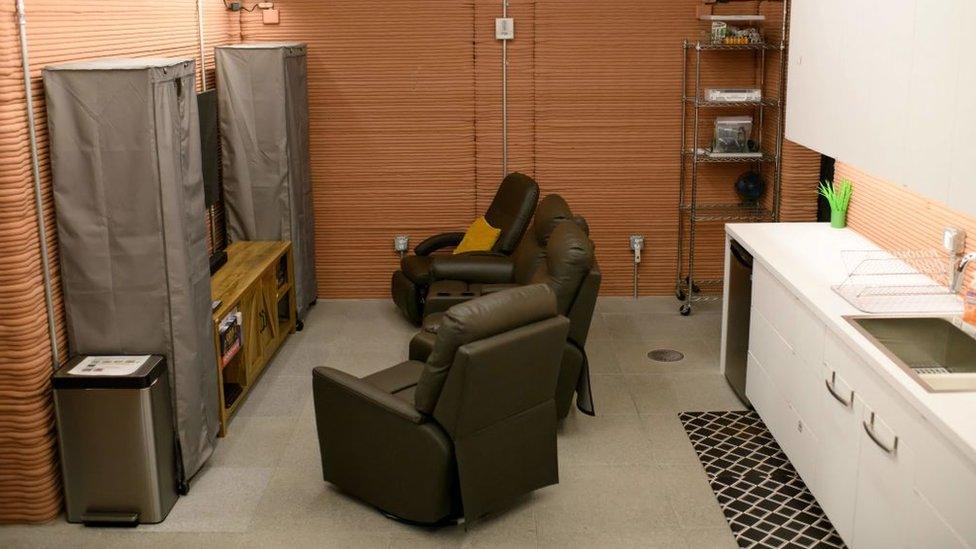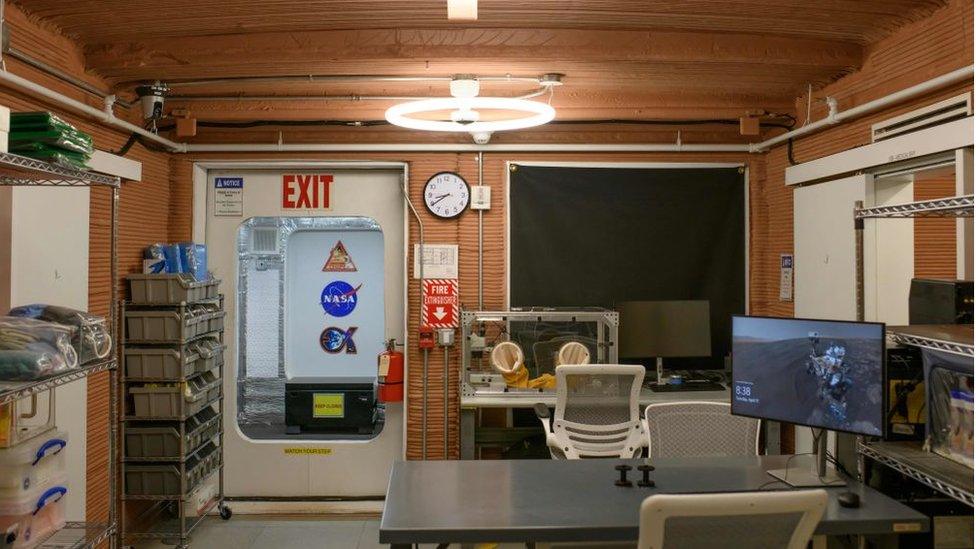Mars Dune Alpha: Nasa reveals Mars-simulation habitat
- Published
- comments
Mars simulation: Could we live on the red planet?
With its red sand outside and shelves of astronaut helmets inside, it might look like it's in outer space, but this structure is actually here on Earth.
Nasa has allowed a sneak peek inside a 3D-printed house created to simulate a habitat on Mars.
In the summer four volunteers will spend a year in the habitat at Johnson Space Centre in Houston to test what it would be like to live on Mars.
It is the first of three planned experiments called the Crew Health and Performance Exploration Analog (CHAPEA)
Mission to 'Mars'

The living and dining area complete with two comfy chairs
The 160 square metres home, nicknamed the Mars Dune Alpha has a dining/living area, a workspace with a vertical farm to grow things and a medical room.
An airlock, which is two doors which can't be open at the same time to protect the controlled environment, leads to an area designed to look just like Mars complete with red sand.
The 'Outside' - which is in fact still inside the huge research base in Texas - has other equipment like a greenhouse, a weather station and even a running machine which the volunteers will walk on suspended by straps to simulate the red planet's lack of gravity.
Can we live on Mars?

During the simulation crew members - who are not astronauts - will carry out different types of mission activities pretending they are on Mars to see if we could live there.
This includes simulated spacewalks, robotic operations, habitat maintenance, personal hygiene, exercise, and crop growth.
To make it even more like being on Mars the crew also will face environmental factors such as limited access to water, being isolated, and having equipment that fails.
Nasa hope that the experiment will help them understand more about how people will cope with life on Mars.
